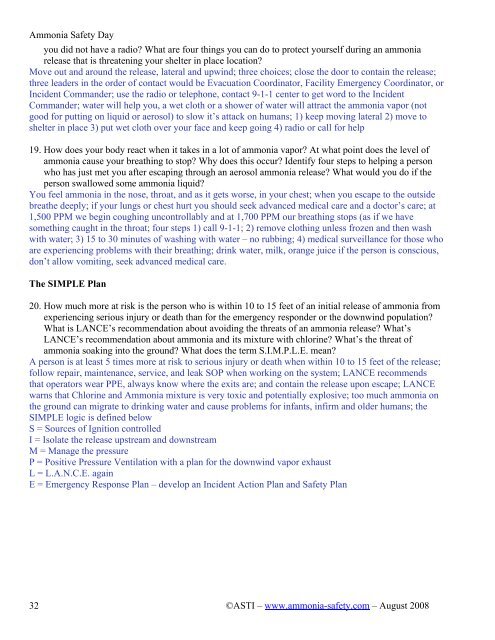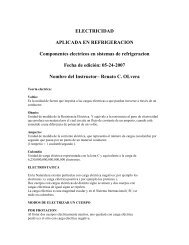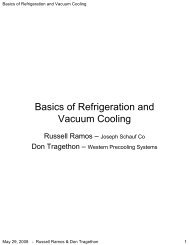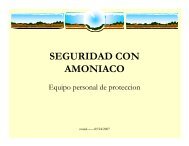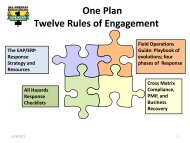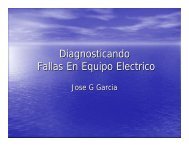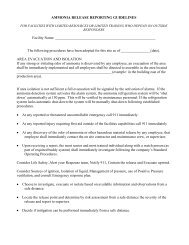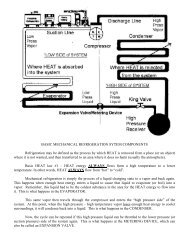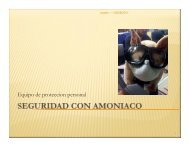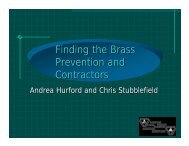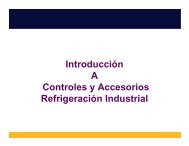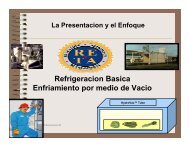Awareness Training Goals - Salinas Valley Ammonia Safety Day
Awareness Training Goals - Salinas Valley Ammonia Safety Day
Awareness Training Goals - Salinas Valley Ammonia Safety Day
You also want an ePaper? Increase the reach of your titles
YUMPU automatically turns print PDFs into web optimized ePapers that Google loves.
<strong>Ammonia</strong> <strong>Safety</strong> <strong>Day</strong><br />
you did not have a radio? What are four things you can do to protect yourself during an ammonia<br />
release that is threatening your shelter in place location?<br />
Move out and around the release, lateral and upwind; three choices; close the door to contain the release;<br />
three leaders in the order of contact would be Evacuation Coordinator, Facility Emergency Coordinator, or<br />
Incident Commander; use the radio or telephone, contact 9-1-1 center to get word to the Incident<br />
Commander; water will help you, a wet cloth or a shower of water will attract the ammonia vapor (not<br />
good for putting on liquid or aerosol) to slow it’s attack on humans; 1) keep moving lateral 2) move to<br />
shelter in place 3) put wet cloth over your face and keep going 4) radio or call for help<br />
19. How does your body react when it takes in a lot of ammonia vapor? At what point does the level of<br />
ammonia cause your breathing to stop? Why does this occur? Identify four steps to helping a person<br />
who has just met you after escaping through an aerosol ammonia release? What would you do if the<br />
person swallowed some ammonia liquid?<br />
You feel ammonia in the nose, throat, and as it gets worse, in your chest; when you escape to the outside<br />
breathe deeply; if your lungs or chest hurt you should seek advanced medical care and a doctor’s care; at<br />
1,500 PPM we begin coughing uncontrollably and at 1,700 PPM our breathing stops (as if we have<br />
something caught in the throat; four steps 1) call 9-1-1; 2) remove clothing unless frozen and then wash<br />
with water; 3) 15 to 30 minutes of washing with water – no rubbing; 4) medical surveillance for those who<br />
are experiencing problems with their breathing; drink water, milk, orange juice if the person is conscious,<br />
don’t allow vomiting, seek advanced medical care.<br />
The SIMPLE Plan<br />
20. How much more at risk is the person who is within 10 to 15 feet of an initial release of ammonia from<br />
experiencing serious injury or death than for the emergency responder or the downwind population?<br />
What is LANCE’s recommendation about avoiding the threats of an ammonia release? What’s<br />
LANCE’s recommendation about ammonia and its mixture with chlorine? What’s the threat of<br />
ammonia soaking into the ground? What does the term S.I.M.P.L.E. mean?<br />
A person is at least 5 times more at risk to serious injury or death when within 10 to 15 feet of the release;<br />
follow repair, maintenance, service, and leak SOP when working on the system; LANCE recommends<br />
that operators wear PPE, always know where the exits are; and contain the release upon escape; LANCE<br />
warns that Chlorine and <strong>Ammonia</strong> mixture is very toxic and potentially explosive; too much ammonia on<br />
the ground can migrate to drinking water and cause problems for infants, infirm and older humans; the<br />
SIMPLE logic is defined below<br />
S = Sources of Ignition controlled<br />
I = Isolate the release upstream and downstream<br />
M = Manage the pressure<br />
P = Positive Pressure Ventilation with a plan for the downwind vapor exhaust<br />
L = L.A.N.C.E. again<br />
E = Emergency Response Plan – develop an Incident Action Plan and <strong>Safety</strong> Plan<br />
32<br />
©ASTI – www.ammonia-safety.com – August 2008


